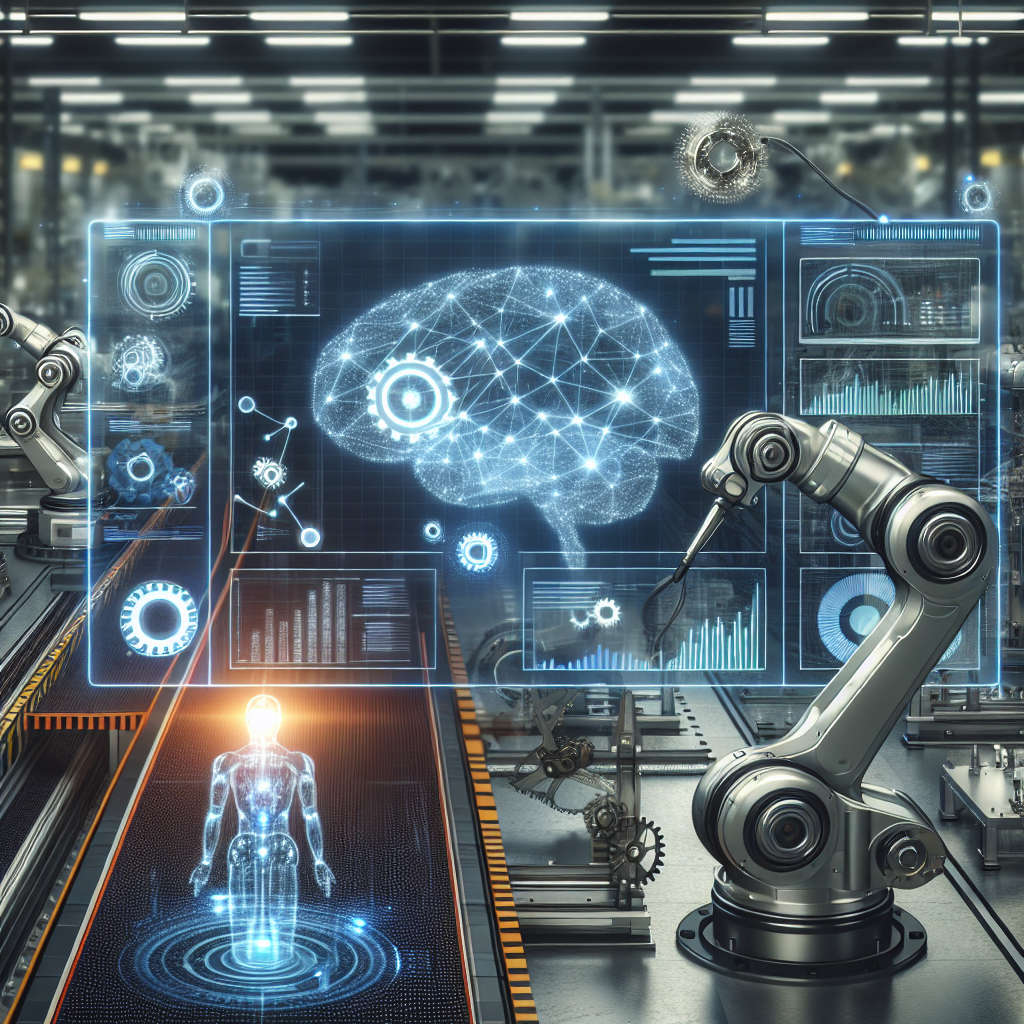In the world of manufacturing, predictive maintenance is a critical strategy for ensuring that equipment operates efficiently and downtime is minimized. By leveraging artificial intelligence (AI) technology, manufacturers can take their predictive maintenance efforts to the next level, improving operational efficiency and reducing costs.
AI has the ability to analyze vast amounts of data in real-time, allowing manufacturers to predict when equipment is likely to fail before it actually does. This proactive approach to maintenance can help companies avoid costly unplanned downtime and prevent breakdowns that can lead to production delays.
One of the key benefits of using AI for predictive maintenance is its ability to detect patterns and anomalies in data that may not be immediately apparent to human operators. By analyzing data from sensors, machines, and other sources, AI algorithms can identify early warning signs of potential equipment failures, allowing maintenance teams to take preemptive action before a breakdown occurs.
In addition to predicting equipment failures, AI can also optimize maintenance schedules based on the actual condition of equipment, rather than relying on fixed time intervals. This can help manufacturers reduce unnecessary maintenance costs and extend the lifespan of their assets.
AI-driven predictive maintenance can also improve overall equipment effectiveness (OEE) by reducing downtime and increasing productivity. By identifying and addressing maintenance issues before they escalate, manufacturers can ensure that their equipment is operating at peak efficiency, maximizing output and profitability.
There are several ways in which manufacturers can leverage AI for predictive maintenance:
1. Data collection and analysis: AI algorithms can analyze data from a variety of sources, including sensors, machines, and historical maintenance records, to identify patterns and anomalies that may indicate potential equipment failures.
2. Predictive modeling: AI can be used to develop predictive models that forecast when equipment is likely to fail based on historical data and real-time monitoring. These models can help maintenance teams prioritize their efforts and allocate resources more effectively.
3. Condition monitoring: AI can continuously monitor the condition of equipment in real-time, providing maintenance teams with up-to-date information on the health of their assets. This can help identify issues early on and take corrective action before they escalate.
4. Predictive alerts: AI can generate alerts and notifications when equipment is exhibiting signs of potential failure, allowing maintenance teams to intervene before a breakdown occurs. This can help reduce downtime and prevent costly repairs.
5. Prescriptive maintenance: AI can also recommend specific actions to take in response to maintenance alerts, such as adjusting operating parameters or scheduling preventive maintenance tasks. This can help maintenance teams make more informed decisions and optimize their maintenance strategies.
Incorporating AI into predictive maintenance practices can help manufacturers achieve significant cost savings and operational improvements. By proactively addressing maintenance issues and optimizing maintenance schedules, companies can reduce downtime, increase productivity, and extend the lifespan of their equipment.
FAQs:
Q: What is predictive maintenance?
A: Predictive maintenance is a proactive maintenance strategy that uses data and analytics to predict when equipment is likely to fail, allowing maintenance teams to take preemptive action before a breakdown occurs.
Q: How does AI improve predictive maintenance?
A: AI can analyze vast amounts of data in real-time to detect patterns and anomalies that may indicate potential equipment failures. By leveraging AI algorithms, manufacturers can predict when equipment is likely to fail and optimize maintenance schedules based on the actual condition of their assets.
Q: What are the benefits of using AI for predictive maintenance?
A: AI-driven predictive maintenance can help manufacturers reduce downtime, increase productivity, and extend the lifespan of their equipment. By proactively addressing maintenance issues and optimizing maintenance schedules, companies can achieve significant cost savings and operational improvements.
Q: How can manufacturers incorporate AI into their predictive maintenance practices?
A: Manufacturers can leverage AI for predictive maintenance by collecting and analyzing data from sensors, machines, and other sources, developing predictive models to forecast equipment failures, continuously monitoring the condition of equipment in real-time, generating alerts and notifications when issues arise, and recommending specific actions to take in response to maintenance alerts.
Q: What are some examples of AI applications in predictive maintenance?
A: Some examples of AI applications in predictive maintenance include using machine learning algorithms to analyze sensor data and predict equipment failures, deploying predictive maintenance software to optimize maintenance schedules, and implementing condition monitoring systems to continuously monitor the health of equipment in real-time.

